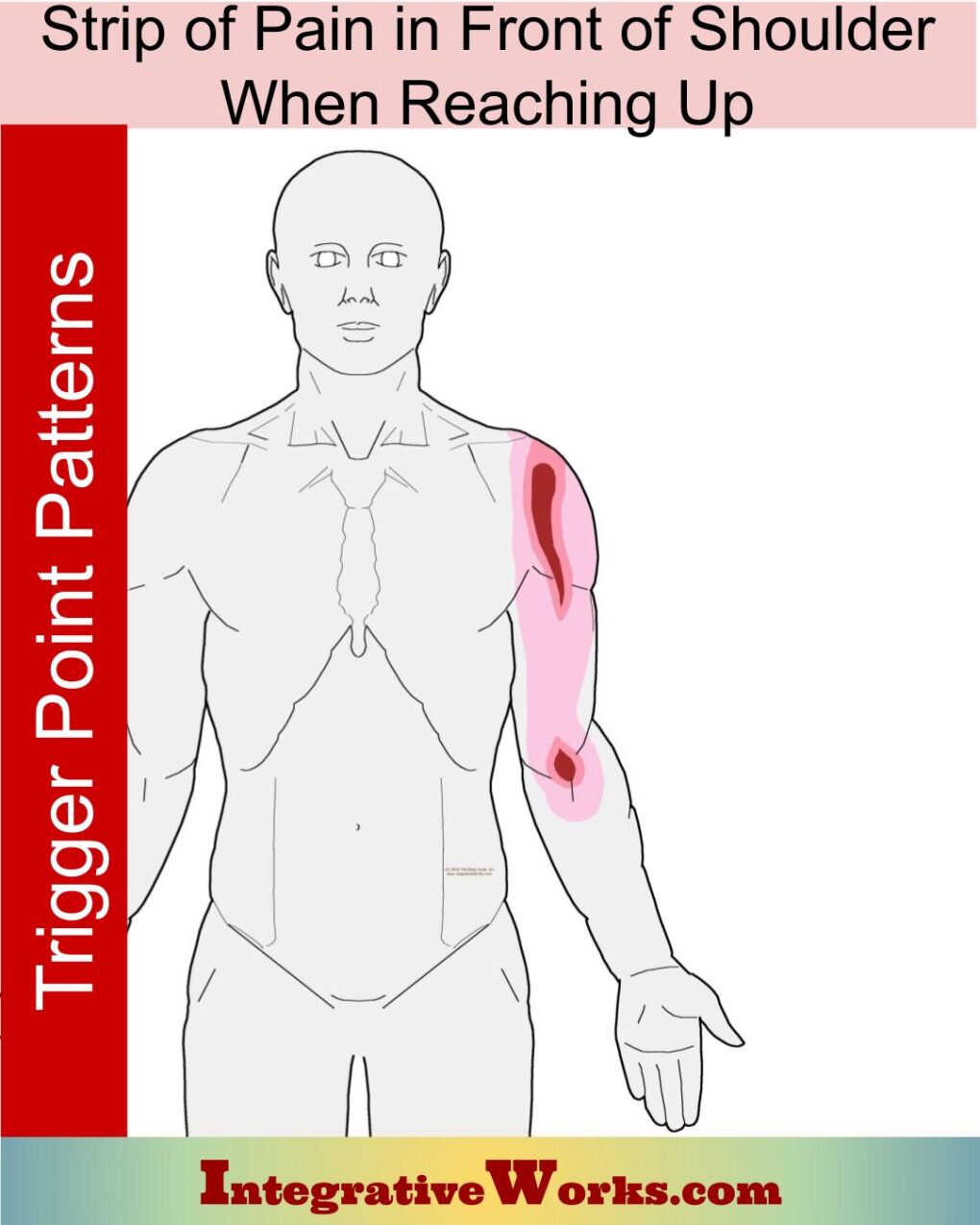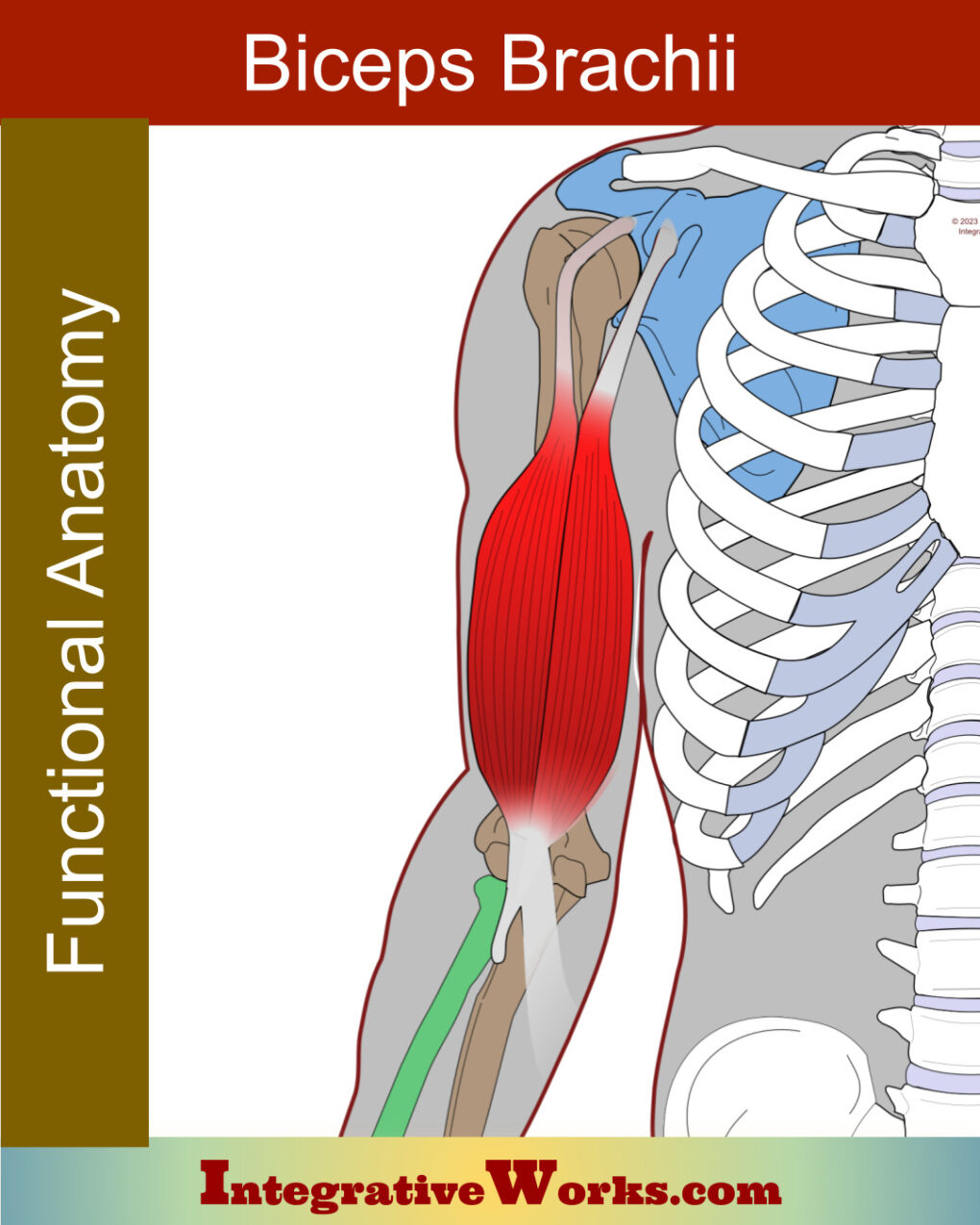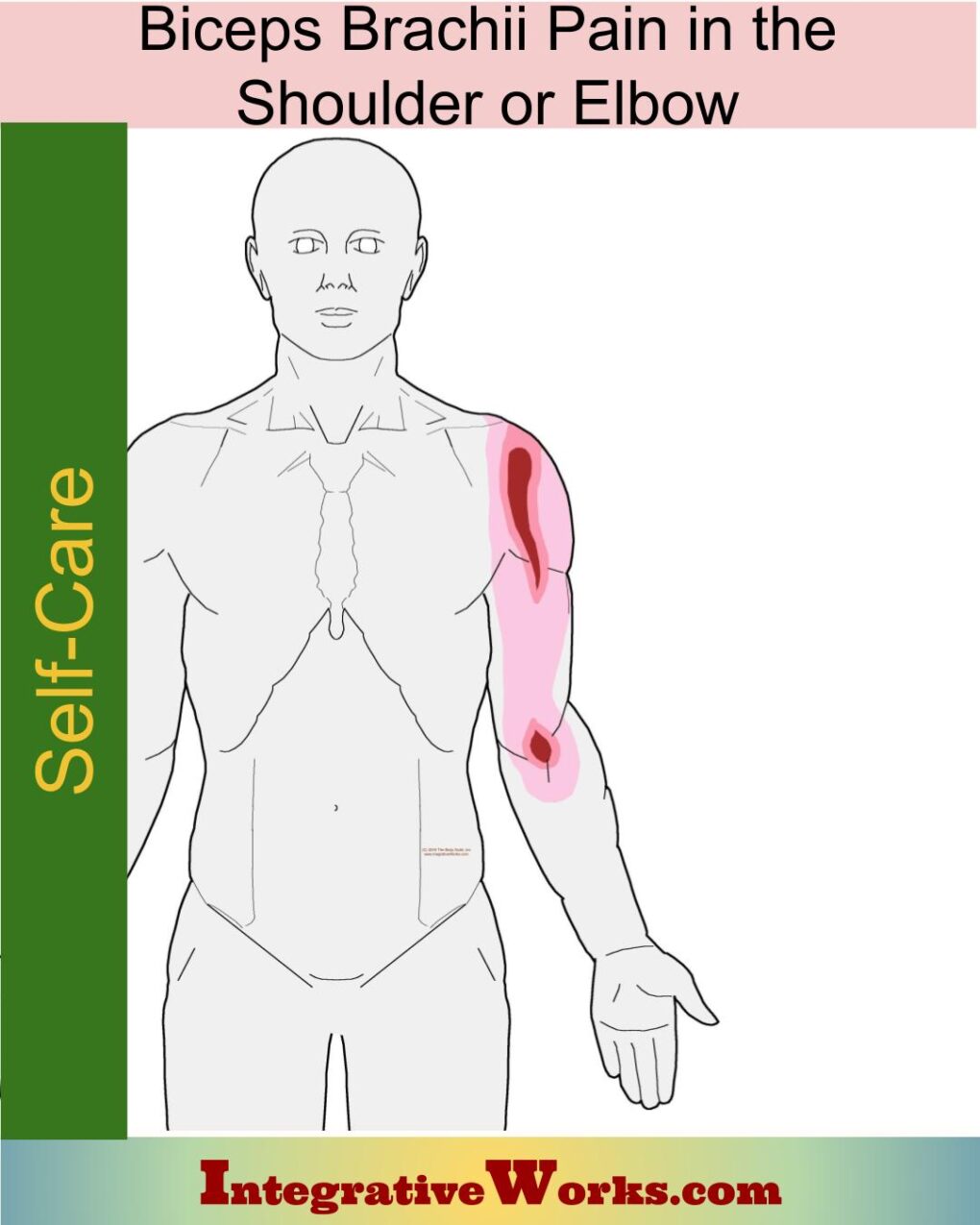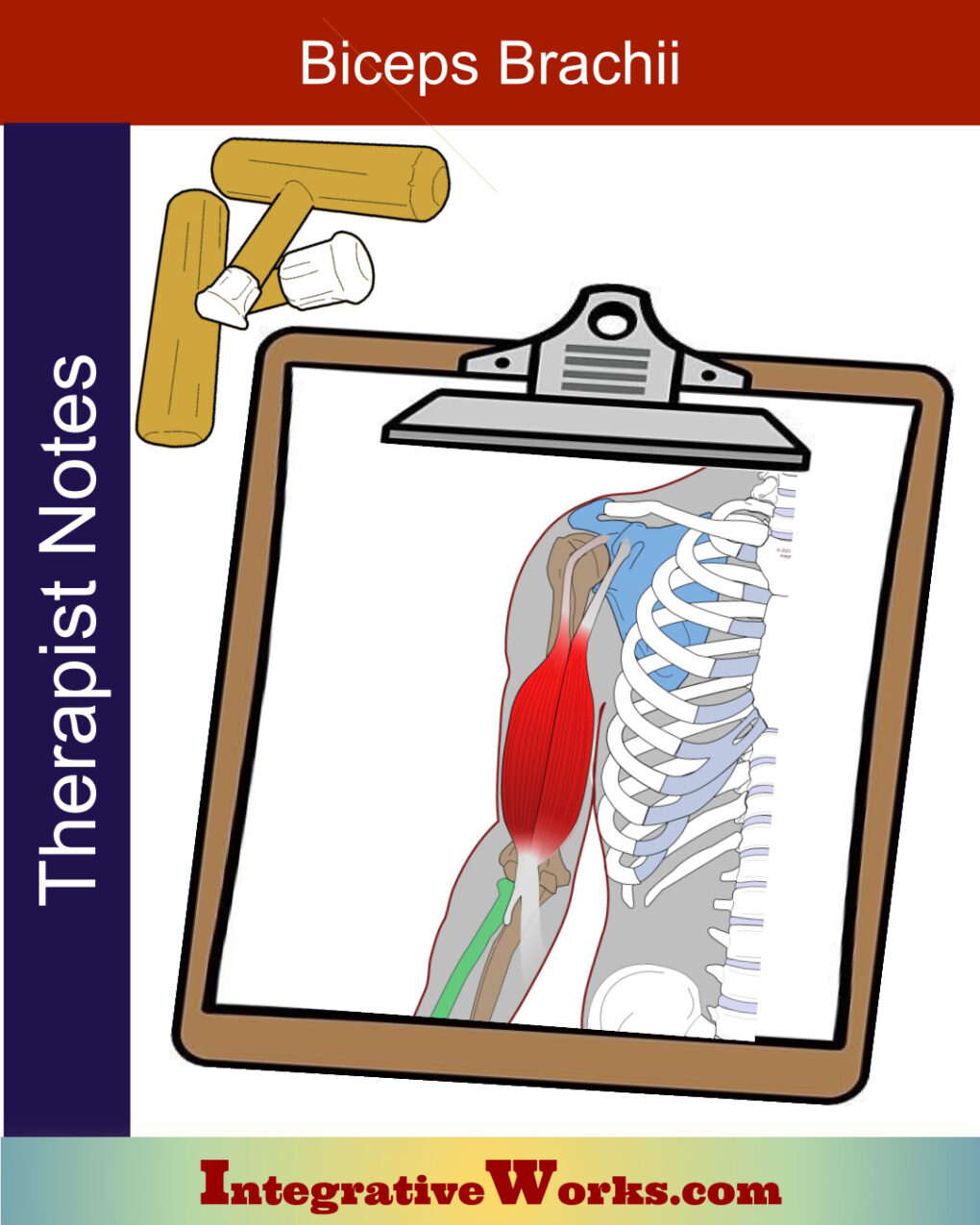How People Describe This Pain Pattern
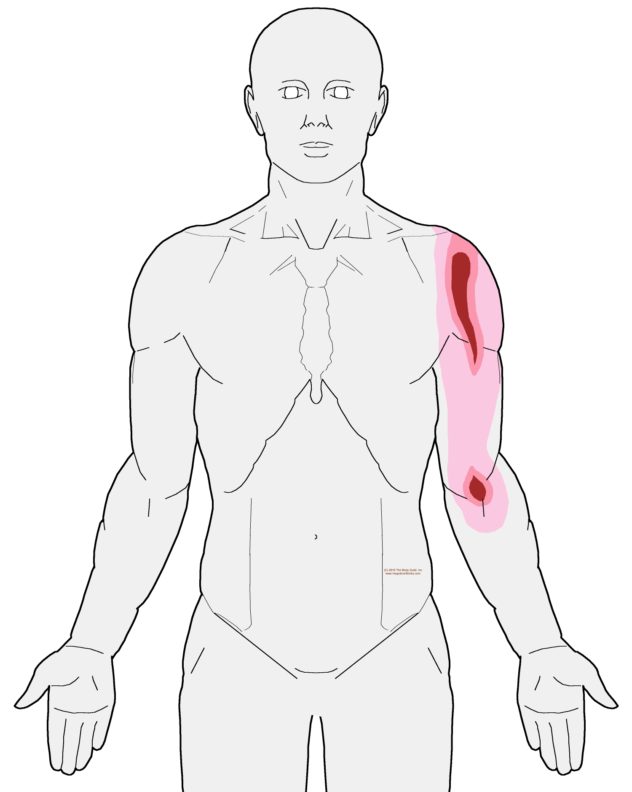
People complain of a strip of pain in the front of the shoulder when reaching up. They often say this is “biceps tendon pain” because it feels more superficial. When I ask if there is a motion that creates pain, they lift their arm in front of them. It bothers them more as the elbow moves above the shoulder. They may not get that rotating the palm up causes more pain until I ask them to try it.
Forward Shoulder
Patients often point out that the shoulder rolled forward. They usually haven’t noticed that it comes from the habitually bent elbow. This biceps problem causes the elbow to bend when standing in a relaxed state.
When the pain around the elbow is present, they have trouble straightening the elbow completely. People complain of pain in the elbow pain less often. I explore that complaint in this other post.
How You Activate and Intensify This Pain Pattern
Jerked upward
If they have an activity associated with the pain, it often involves jarring or jerking the shoulder. Research talks about the onset of pain from a powerful backhand in tennis. My clients usually had some overload while lifting something with the elbow bent. They may have been carrying bags in the yard or tried to move a heavy piece of furniture with the elbow bent. One woman was handed an unexpectedly heavy child. There is an underlying shoulder joint problem in these cases, and this is an injury waiting to happen. Clients report being jerked by the tailgate of their SUV as it lifts.
Overdoing it
The other typical onset is vigorous or chronic overuse. This typically involves too much exercise, yard work, or remodeling. This can be strained with heavy curls or chin-up (palms facing you) when exercising. Hauling blocks or bags that require you to keep your elbows bent stress this trigger point.
People may complain that the pain disturbs their sleep if they hold their hands close to their face. In this case, the trigger point has become more chronic.
The Musculoskeletal Anatomy Behind Your Pain
Musculoskeletal Anatomy
This post on anatomy contains standard information about the origin, insertion, function, and innervation of muscles. Additionally, it includes information on functional considerations and anomalies.
Find Related Posts
Anatomy posts have a grid of all related posts. This includes posts on pain patterns, self-care, therapy notes, NMT protocols, cranial techniques, and cases.
Getting Relief on Your Own
Clinically Proven
Self-Care Strategies
Self-Care Posts have common sections to make them easy to follow and understand:
- Activities to Avoid or Change
- Strategies for Quick Relief
- Stretches and Exercise for Longer-Lasting Relief
- Yoga Corner
Therapy Notes for Massage and Bodywork
Better Bodywork
Through Shared Expertise
This post has techniques, tips, treatment routines, and anatomy illustrations to improve the bodyworker’s approach.
Support Integrative Works to
stay independent
and produce great content.
You can subscribe to our community on Patreon. You will get links to free content and access to exclusive content not seen on this site. In addition, we will be posting anatomy illustrations, treatment notes, and sections from our manuals not found on this site. Thank you so much for being so supportive.
Cranio Cradle Cup
This mug has classic, colorful illustrations of the craniosacral system and vault hold #3. It makes a great gift and conversation piece.
Tony Preston has a practice in Atlanta, Georgia, where he sees clients. He has written materials and instructed classes since the mid-90s. This includes anatomy, trigger points, cranial, and neuromuscular.
Question? Comment? Typo?
integrativeworks@gmail.com
Follow us on Instagram

*This site is undergoing significant changes. We are reformatting and expanding the posts to make them easier to read. The result will also be more accessible and include more patterns with better self-care. Meanwhile, there may be formatting, content presentation, and readability inconsistencies. Until we get older posts updated, please excuse our mess.

